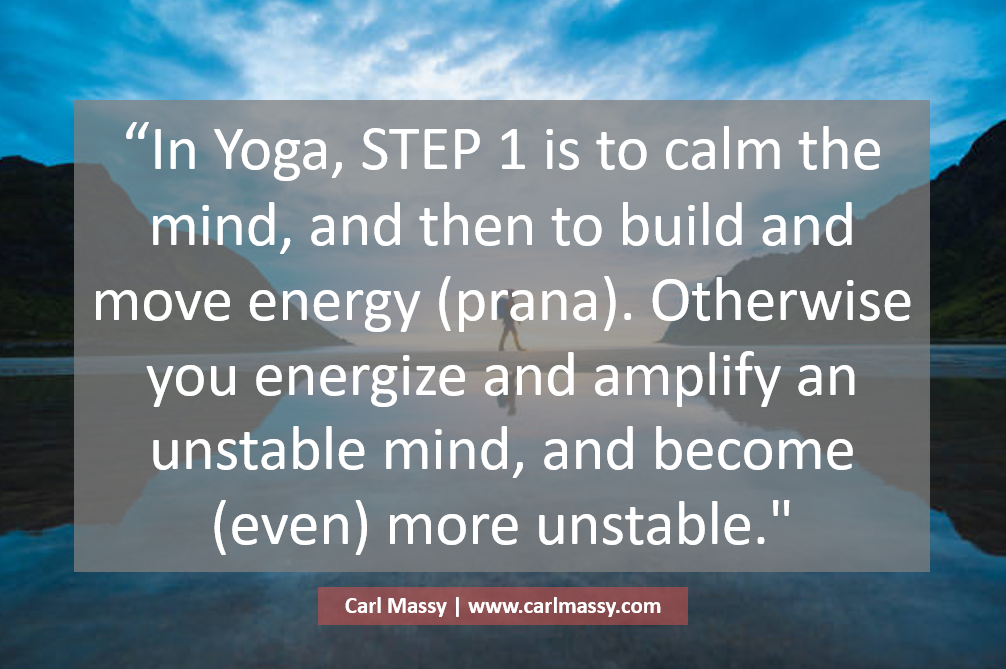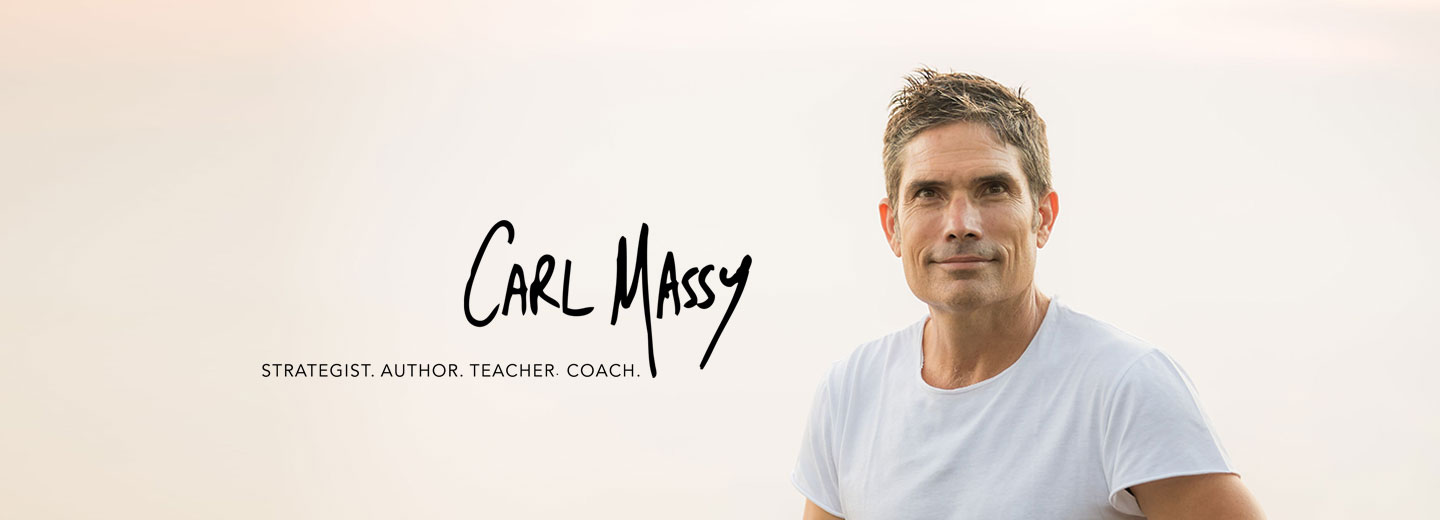
A quarter of a century ago, I started my ‘personal development’ journey.
It started with a 30-Day program (6 x CD’s), by Tony Robbins, called Personal Power II, and as a result I made three (3) radical changes in my life.
Firstly, I stopped getting drunk (I switched to low alcohol beers and limited myself to 2 or 3 if I was going out for the night).
Now for the record, drinking “Lite” beers was not well received by my Army buddies.
Next, I switched to a pescatarian diet (principally vegetarian, with the exception of occasional seafood).
And finally I started attending YOGA classes at my local gym in Bondi Junction (Sydney).
So today, as a tribute to my 25-year journey into the yoga world, I will share the 4 main things I learned over the years.
Plus you can access to a great presentation by Octavio Salvado, who is the Founder of The Practice yoga centre in Bali, and someone who has gone WAY deeper than me into the traditional teachings of yoga.
The first thing is that yoga has been around for 1000’s of years. There is some archaeological evidence, which has been carbon dated, and puts the history of yoga at around 6,000 years.
I reckon something stops being called a “fad” at about the 50 year mark. 😉
Some also call yoga the original science of human optimization; which I don’t think is the stretch.
Science is about research, trial and error, testing a hypothesis, and based on the hypothesis, determining if specific actions, practices and teachings are replicable.
If a number of students are taught a specific method of achieving a specific result, and all the students achieve the same results, then the methodology is replicable, and the ‘scientific method’ is in play (regardless of whether there is technology to measure things at the atomic or molecular level).
The point of note is that the methodology needs to be specifically taught, and specifically practiced, in order to get a specific and consistent result.
Hence not all yoga is created (or taught) equal.
In the presentation by Octavio, he is very passionate about the ‘science’ and specific methodology of the traditional teachings of yoga, and why so much yoga ‘does not work’ or can be suboptimal in the journey to ‘self-actualization’ (Maslow), or ‘elevated emotional states‘ (Dr Joe Dispenza), or ‘enlightenment‘ (from Hindu and Buddhist traditions), or ‘awesome human being‘ (Carl Massy).
So let that be the context of our journey into the world of yoga.
My TOP 4 Lessons Learned on my 25-year yoga journey
(There are much much more than 4, but I want to keep this short(ish) for you).
Number 1 Lesson: The Breathe
I was fortunate enough, to find at my first yoga class in 1999 – which was in a big commercial gym – an instructor who had been doing yoga for about 30 years, having started before his age was even into double digits. He was vital. A high performer professionally (he consulted to the Sydney Olympics Games). And a pretty self-aware dude.
He gave me an amazing book, by a traditional yogi, written in the early 1900’s and it was all about different breathing techniques. There was not one yoga posture (asana) mentioned. It was all about the breath.
Breathe is one of the primary tools of yoga.
The tool used to prepare the body and mind, for the deeper work of yoga.
To enable access into ‘consciousness’ and perhaps even deeper into the realms of the unified quantum field / the divine / God / Purusha / Allah.
What this means practically is that if your yoga teacher is more focused on the yoga asana’s (postures), than the breath, they are missing a big part of the teachings.
A decent (real) yoga session will always have a pranayama (breathing) element.
Number 2 Lesson: The Mind
I have to credit Octavio Salvado (The Practice) for my understanding of this.
Which, when he explained it, made complete sense.
In yoga, one of aims (described simplistically) is to increase the access to, and the intentional movement of energy in the body. What is called prana in yoga, or chi in Chinese practices, or energy in the western world.
So yoga, like other practices, is about increasing our vitality, and accessing energy, in order to better play the game of life.
However, yoga makes a great distinction.
If you increase the energy to a mind that is not stable or is incoherent, it can do more harm (distruption) than good.
The best way I have heard that described is by Octavio.
He talks about increasing energy illuminating whatever is going on at the level of mind.
If someone is an “a-hole”, building up their energy (through the practices of yoga), just makes them a BIGGER “a-hole”.
The point is that STEP 1 is to ‘still the mind’ before moving on to STEP 2, where you start stoking the fire and increasing energy (prana).
I actually recommend that most people in the modern, highly-distracted and over-stimulated world, are best to do yogic practices that are purposely designed to calm and harmonise the mind, before they focus on building energy.
Using the breath, and breathing patterns in specific ways, is a doorway to that calmer state of mind.
In short, the practice is about doing longer exhalations, and shorter inhalations, in order to calm the mind.
For example, breathe IN for 4 breathes, but breathe OUT for 8 breathes.
Number 3 Lesson: Lessons ‘Off the Mat’
As I said before, I have spent a lot more of time focusing on the ‘principles’ of yoga, and their application in modern life, than busting out the yoga postures.
One of the principles I like is essentially the practice of ‘non-attachment’.
At an esoteric level, that might be acknowledging that there is a part of me (consciousness), which is not my body, mind or emotions, but is an eternal element above all.
Also called: “The silent witness”.
There is a part of us that can detach, from everything.
That can watch our life from a higher perspective.
It is not reactive, and not ‘attached’ to what is happening around us.
It is also a part of us that is able to let go of ‘attachment’ to thoughts, beliefs, past experiences, physical stuff (e.g. our possessions), and even future outcomes.
In a practical sense I have specifically applied the principle in ‘not being attached’ to things ending. Like relationships, business projects, personal possessions, and even desired goals.
What I have found helps with the practice of non-attachment, is when something ends, I audit the begeezus out of it, to learn everything I can from it (or the experience), so what I let go of is actually a shell, without the juicy stuff within the experience.
Number 4 Lesson: It’s different from ‘exercising’
One of the ways I believe ‘modern’ yoga has gone off course, was turning it into a physical workout.
It was never developed for that.
In the more distant past, most people did enough incidental activity in their lives (walking, lifting, running pushing, pulling, etc.) that they didn’t need to do ‘workouts’ at the gym.
Yoga was a practice to get the most out of the mind.
To help the mind (and practitioner) be more powerful, focused, creative, non-reactive, resilient and attuned to the more subtle energies that exist in our cosmic reality.
It wasn’t a workout session.
And when it becomes more of a workout session, with lots of different postures, and short holds, and the absence of things like breath-holds, you lose your ability to connect with the inner landscape.
Energy is subtle.
If we are rushing through a yoga ‘workout’, to build up a sweat, and build our physical muscles, we are missing the point of it, and about 5950 years of its refinement.
The best yoga – for the mind and to optimize our lives – is likely to have less postures, longer holds, less Instagram-worthy-looking postures, and be more ‘bland’.
It is focused on the inner world.
And that is not best accessed by moving around like a crazy person or trying to be the most ‘flexible’ in the class.
My yoga is not my primary ‘physical workout’.
I do other stuff for that.
My yoga practice is more sacred and for the long-term game.
In Summary
I could say a lot more, but I will keep it to this.
If your yoga classes don’t include specific breathing practices (pranayama), meditation, longer holds, breath retentions, or the likes, you might want to find a new class.
And if you want to go much deeper on the practice of traditional yoga, then I encourage you to check out the work of Octavio Salvado, who is committed to the traditional practices at the expense of ridicule by the more glitzy, glamourous and profitable ‘modern’ yoga businesses.
My Parting word
I am going to keep this VERY short.
Check out the Presentation by Octavio, where he goes much deeper into the traditional practices, and the systematic teachings, in order to achieve specific results.
I am forever grateful for stepping into the yoga world, 25-years ago, and finding some amazing teachers and teachings along the way.
Thank you to all of those great teachers!
On that note…
Have a calm and heart-centred-infused day, and a vibrant week of appreciation for the gifts we are provided by those that came before us.
Take care.
Carl
PS: Have you read or listened to this book yet? 18 Ways We Make Life WAY Harder Than It Needs To Be


1 reply on “My 4 Best Tips From 25-Years Of Yoga (The Original Science Of Human Optimization)”
Hi, I log on tto your blogs on a regular basis. Your humoristic style is awesome, keep
it up! https://Lvivforum.PP.Ua/